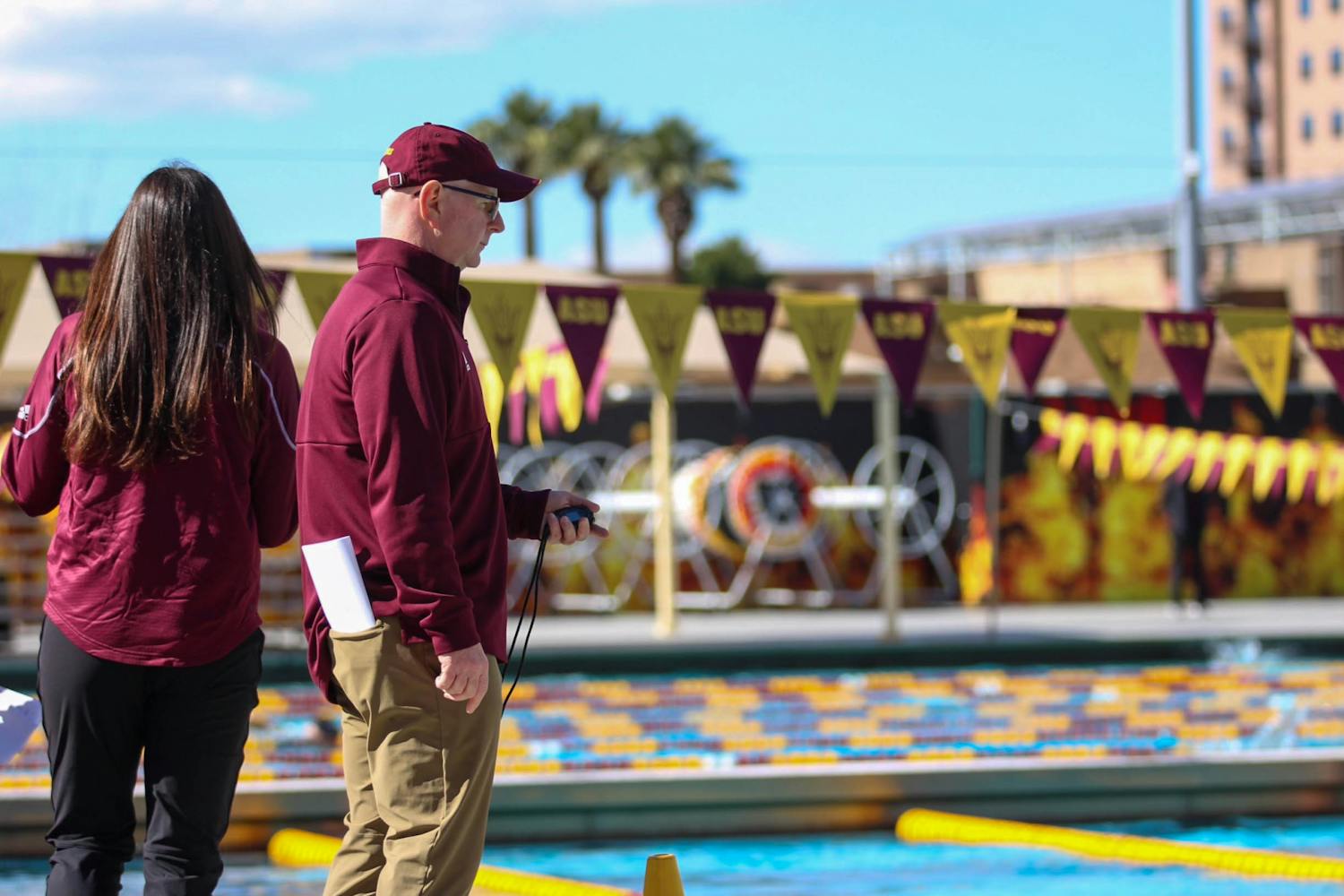 ASU neurophysiologist Marco Santello reveals the robotic hand that he has been working on for months. Santo is currently collaborating on a project that employs new advances to simplify the control of grasping movements by a robotic hand. (Photo by Ryan Liu)
ASU neurophysiologist Marco Santello reveals the robotic hand that he has been working on for months. Santo is currently collaborating on a project that employs new advances to simplify the control of grasping movements by a robotic hand. (Photo by Ryan Liu)
ASU neurophysiologist Marco Santello, with the help of his collaborators at the Mayo Clinic and the Italian Institute of Technology, is working to create a better prosthetic hand.
This hand uses myoelectricity, technology that reads the electrical properties of muscles when they are used, to activate grasping motions that are almost identical to the those of the natural human hand.
“This is likely to be a major breakthrough in the way we think about prosthetic hands,” Santello said. “We want to design something that will address the major limitations of other available prosthetics.”
He said he feels his work on the prosthetic hand is important because disabilities that affect the hands, like strokes and amputations, can have a profound effect on the lives of individuals.
“The reason I wanted to work on a hand is that it is one of the sensory motor systems that is very central to quality of life,” he said. “We use our hands to communicate and express ourselves, to act on the environment, to play and to do pretty much everything else that makes us human.”
The prosthetic hand that he is working to perfect is a variation of a robotic hand developed by Antonio Bicchi, his collaborator at the Italian Institute of Technology in Genoa, Italy.
Bicchi originally created the robotic SoftHand, and Santello is building upon his efforts by fitting it with technology that enables it to be used as a prosthetic. They’re calling this prosthetic adaption of the SoftHand “SoftHandpro.”
Like many prosthetic hands, the SoftHandpro is fitted with a custom socket for those who wear it, and it uses myoelectric technology to cue movements such as grasping and holding on to objects.
 ASU neurophysiologist Marco Santello demonstrates the robotic hand that he has been working on for months. Santo is currently collaborating on a project that employs new advances to simplify the control of grasping movements by a robotic hand. (Photo by Ryan Liu)
ASU neurophysiologist Marco Santello demonstrates the robotic hand that he has been working on for months. Santo is currently collaborating on a project that employs new advances to simplify the control of grasping movements by a robotic hand. (Photo by Ryan Liu)What makes the SoftHandpro unique is its ability to move in a lifelike way.
It’s also exceptionally light, considering that it has multiple movable joints. Most prosthetic hands that have multiple movable joints are significantly heavier than the SoftHandpro because they require a separate motor for each individual joint. The SoftHand pro uses only one motor, made possible by a technique called underactuation.
“Together, we thought that we had something special,” Santello said of his collaboration with Bicchi. “We had a biologically inspired new design that felt easier to control to the subject.”
The National Institute of Health also thought the pair had something special on their hands. The NIH awarded them a grant of $400,000 on Sept. 1 for furthering the development of their project over the next two years.
“Now, what we’re going to do when we’re testing (the prosthetic hand) over the next two years is quantify the strengths and weaknesses of the design based on the feedback we get from amputees and based on the measurements we take at ASU and (the Mayo Clinic),” Santello said.
Dr. Karen Andrews directs the amputee rehabilitation service at the Mayo Clinic in Rochester, Minnesota. She began observing the first amputee to use the SmartHandpro last month.
“Current myoelectric prostheses generally fall into two categories: single grasp, three-digit hands and multi-grasp anthropomorphic hands,” she said. “While the former are often easier to control, lighter in weight and more affordable than their more advanced counterparts, they are also more limited in function, because they are only able form a single, rigid grasp.”
She said the SoftHandpro presents “an intermediate alternative” to these. It has an anthropomorphic grasp, but without the excessive weight that normally accompanies such a characteristic in prosthetic hands.
“The SoftHandpro is a clinically relevant alternative to the prosthetic options currently available and will serve to guide future improvements in the development process,” she said.
Panagiotis Artemiadis is a professor of mechanical and aerospace engineering at ASU’s School for Engineering of Matter, Transport and Energy who works extensively with robotics. Although he is not involved with Santello’s work on the SoftHandpro prosthetic, he specializes in developing control interfaces between humans and robotic prostheses.
“Santello's work is innovative because it is the first attempt to integrate a compliant robotic hand to an advanced prostheses, which will be controlled using myoelectric signals,” he said. “It is important because it can dramatically change the acceptability of the hand by the amputees and eventually improve their quality of life.”
Reach the reporter at megannphillips@asu.edu or follow her on Twitter @megannphillips
Like The State Press on Facebook and follow @statepress on Twitter.




